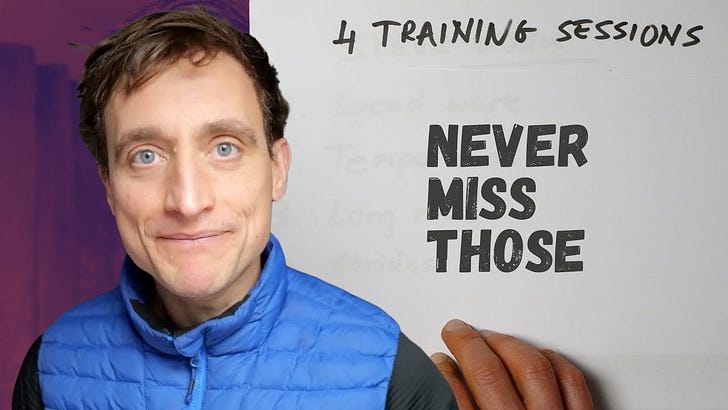How Do I Train to Run Faster: A Practical Guide for Runners
If you’re a runner aiming to boost your speed, you’re not alone. Many runners start with distance as their primary goal, focusing on completing a 5K, then a 10K, and maybe even a marathon.
Running far doesn’t necessarily mean running fast. You might find yourself running marathons but struggling to pick up speed.
The good news?
You can transform your pace and become a faster, stronger runner with the right training sessions and approach.
Here’s how:
Read below or watch the video:
1. Focus on Four Key Training Sessions
To improve your speed, your training plan should include four essential types of runs:
Speed Work
This is all about training your body to run faster. The best way to do this is through intervals—short bursts of intense effort followed by rest. For example, run 200 or 400 meters as fast as possible, rest for one to two minutes, and repeat 6–8 times. Speed work pushes your limits and teaches your body to sustain higher speeds over time.
Tempo Runs
Tempo runs are about maintaining a "comfortably hard" pace, typically around 80–85% of your maximum effort. These runs usually last 20–30 minutes and help build your lactate threshold, crucial for sustaining faster speeds over longer distances.
Long Runs
Even if your goal is to run faster, long runs are still essential. These runs are slower (about a minute per kilometer slower than your goal pace) and longer, improving your endurance and aerobic capacity. If you aim to run a fast 5K, your long runs might range from 8 to 10 kilometres.
Strides
Strides are short, fast sprints that focus on perfecting your running technique. Incorporate 20–30-second strides at the end of an easy run or in the middle of your session. Focus on proper form, quick turnover, and efficient movement.
2. Don’t Skip Strength and Mobility Work
Running fast isn’t just about cardio; it’s about strength and flexibility, too. Strong muscles provide the power needed for speed, while good mobility ensures you can maintain a long, efficient stride.
Strength Training: Incorporate exercises like squats, deadlifts, and lunges to build strength in your legs, core, and glutes.
Mobility Work: Stretching and dynamic movements help you maintain flexibility and prevent injuries.
3. Perfect Your Running Technique
Running may seem natural, but running efficiently is a skill that takes practice. Poor technique can slow you down and increase your risk of injury. Include drills like high knees, butt kicks, and bounding to refine your form.
4. Prioritize Fueling and Recovery
Your performance doesn’t just depend on your runs—it’s also about what you do before and after them.
Fueling: Eat a balanced meal before your runs and ensure you’re replenishing with protein and carbs afterwards.
Rest: Recovery is as important as training. Listen to your body, take rest days, and use tools like foam rollers or recovery apps to monitor your fatigue levels.
5. Regularly Test Your Progress
Set aside a day every 4–6 weeks to test your current speed. Whether it’s a timed 5K or a specific interval session, tracking your progress ensures you’re moving in the right direction. If your speed hasn’t improved, it may be time to adjust your training.
My Personal Goal: Sub-20-Minute 5K
For me, the ultimate goal is to run a 5K in under 20 minutes. I’m about two minutes off, but with consistent training, I believe I’ll achieve it by the end of the year. Having a clear goal keeps me motivated and focused.
Running faster takes a mix of strategy, effort, and patience. Incorporating speed work, tempo runs, long runs, and strides into your training plan, alongside strength, mobility, and proper recovery, will set you up for success.
Whether you’re chasing a sub-20-minute 5K or want to shave a few seconds off your time, consistency and commitment are key.
Let me know how your training is going—I’d love to hear your story!
Leszek



